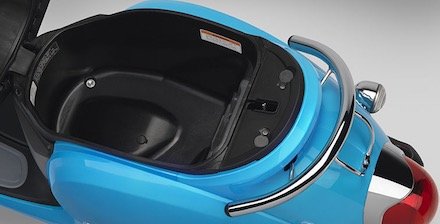HONDA METROPOLITAN / GIORNO (NCH50/NCW50)
Honda has sold two distinct generations of the Metropolitan in North America. The first generation (model code CHF50) was sold from 2002 to 2009 and is dealt with separately. The second generation is the focus here. This scooter was first offered for 2013 and was substantially updated for 2016 including a new motor and revised body panels. This scooter remains on sale as of 2020 in the USA, but was discontinued in Canada after 2017.
This scooter revived the Metropolitan name in the USA that was previously used from 2002 – 2009 on an entirely different but similarly styled machine. In the rest of the world including Canada, this scooter is called the Giorno, although overseas there are many different versions of the Giorno.
Names, Model Codes and Versions
This model introduced for 2013 was known internally to Honda as the NCH50 and it is badged as the Giorno in every worldwide market except for the USA, where the Metropolitan name is used. Starting in 2016, Honda switched to offering a slight variant of this model which is called the Giorno Clip in some markets (e.g. Japan), just the Giorno in others (e.g. Canada) and still the Metropolitan in the USA. This revised version uses a slightly different model code of NCW50. Overseas the Giorno name plate has been in use for a while, so don’t confuse the older more vintage styled Giorno (1992 – 1999) with recent iterations.
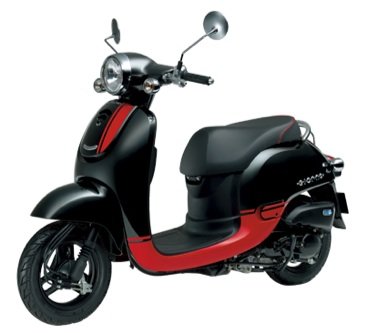
Honda substantially updated this second generation Metropolitan for 2016 with gently revised styling and a switch to a liquid cooled motor. These changes include new rims, new gauges, revised side panel styling and a new look for the upper legshield.
 Design and Amenities
Design and Amenities
The 2002-2009 Metropolitan used plastic body panels mounted to an advanced aluminum frame. This second generation Metropolitan abandons this expensive frame and instead utilizes lower cost steel tubing. Despite this, weight savings elsewhere mean the total weight is up only 3 lbs to 179. The NCH50 is about 40 lbs lighter than a steel bodied Vespa, and continues to allow much easier and cheaper to replacement of damaged body panels.
Version 1: 2013 – 2015
The Metropolitan / Giorno had a large storage cubby hole in the leg shield and a small hook above that, whereas the previous generation had neither. Unfortunately Metropolitan loses the gas tank located internally in the floorboard and instead uses a gas tank positioned under the seat. This simpler gravity fed system allows for a lower cost, but it does consume some of the underseat storage space. Still, many full face helmets will fit. Fuel tanks located under the seat are the norm, so the Metropolitan / Giorno surrenders its previous advantage in this area in exchange for a lower MSRP.
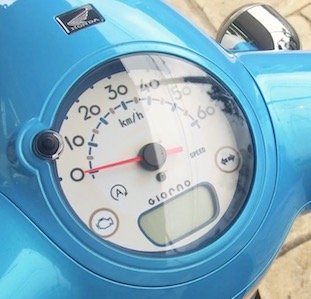
The restyled dash of the Metropolitan continues to be tastefully styled. There’s a speedometer, fuel gauge, odometer and a few small warming lights. The rear shock carries over from generation one, but the inverted front forks are new. Hopefully they are an improvement over the forks in the early Metropolitan which were widely panned as being too soft and easy to bottom out. Year by year color options are listed at the bottom of the page.
Version 2: 2016 – Present
Honda ticked off nearly every request on Metropolitan owners wish lists for 2016 with their overhaul of the Metropolitan (now NCW50). The motor was replaced with a new liquid cooled AF74E engine (see motor section below), the fuel tank was relocated into the floorboard and more storage was freed up. Honda replaced the large open storage area in the legshield with a smaller open cubby hole under the ignition and a great new closable glovebox beside it. It’s the perfect place for your insurance papers.
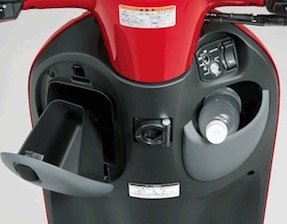
Under the seat Honda added a substantial amount of storage thanks to the relocation of the 1.2 gallon fuel tank down into the floorboard. Accordingly, the revised Met is about as good as it gets for storage in a 50cc. Honda also updated the style for 2016 with new rims, new color accents on the rear flanks and new details on the front of the leg shield. The core frame carries over for 2016, so with enough effort most of the updates for 2016 should be retrofittable to 2013-2015 Mets.
Motor
From 2013-2015 the NCH50 Metropolitan used Honda’s AF70E motor, which gave up liquid cooling found in the first generation Met motor (GET2), but gained PGM-Fi (fuel injection). Honda claims 4.5 HP @ 8250 RPM for the new motor which is similar to the old GET2 but top speed is lower by a few mph (37-38 mph instead of 40-42). Fuel milage is slightly higher, as Honda is claiming a 3mpg boost to 117mpg. Real world economy in mixed conditions is right around 100 mpg. The AF70E motor is bottom hung (mounted from beneath the engine) instead of top mounted like the GET2. This means you can’t swap this engine into an older Metropolitan or vice versa without extensive frame modifications.
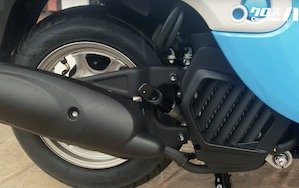
Discussion
Honda clearly set out to compete more aggressively on price with the 2013-2015 Metropolitan, which lowered the MSRP at a time when most competitors were creeping upwards. The NCH50 was a capable scooter and sold well, but was a step back technologically for Honda (steel frame, air-cooled).
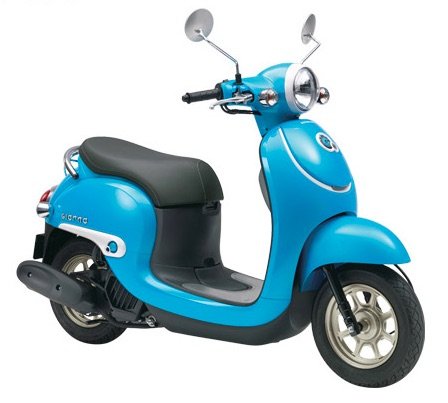
The NCH50 is a well built scooter – probably the best built – and it offers a great list of features plus Honda’s renowned quality. You’re not going to find another 50cc with the same quality of motor and the storage amenities are unsurpassed. Still, all this costs money and you may be interested in a lower cost scooter rather than the best engineered scooter. A few other machines worth considering are Genuine’s Buddy (aka PGO Metro), Yamaha’s Vino 50, SYM’s Mio 50 and Kymco’s Like 50 and Compagno 50. Ignoring price, these scooters rank in quality as Metropolitan, Vino,
Like 50, Buddy, Compagno and then Mio 50 (best to worst). The main reasons for straying from a Metropolitan are if you like the styling of another machine, want to spend less on entry level machine or find a great deal.
Pros:
- Awesome mileage / Fuel Injection
- Top notch engine (2016-onwards)
- Storage
- Affordable MSRP (2013-2015)
Cons:
- Air cooled motor (2013-2015)
- Steel tube frame
- Price (2016 onward).
Links:
MotorscooterGuide Forums – Visit the forum on this site to chat about your scoot
UrbanScootin – Online CHF50 oriented forum
ScooterSwapShop – Aftermarket goodies
2013 (NCH50) Review – Motorcycle-USA takes the new Met for a spin
Key Specs: 2013-2015 NCH50 Metropolitan / Giorno
- Engine: AF70E 49cc air-cooled, SOHC, 2-valve, single cylinder 4-stroke
- Power: 4.5HP @ 8250 RPM
- Bore x Stroke: 37.8 x 44.0mm
- Compression: 10.1:1
- Fuel Delivery: PGM-Fi
- Ignition: CDI
- Transmission: Automatic V-Matic belt drive
- Front Suspension: Twin-downtube inverted fork, 2.1”travel
- Rear Suspension: Single shock; 2.3” travel
- Front Brake: Drum
- Rear Brake: Drum with CBS
- Tires: 80/100-10 (Front and Rear)
- Wheelbase: 46.5”
- Seat Height: 28.3”
- Wet Weight: 179 lbs wet
- Fuel Capacity: 4.5L / 1.2 gallon
Key Specs: 2016-Present NCW50 Metropolitan / Giorno
- Engine: AF74E 49cc liquid-cooled, SOHC, 2-valve, single cylinder 4-stroke
- Power: 4.4HP @ 8000 RPM
- Bore & Stroke: 37.8 x 44.0mm
- Compression: 12.0:1
- Fuel Delivery: PGM-Fi
- Ignition: CDI
- Transmission: Automatic V-Matic belt drive
- Front Suspension: Twin-downtube inverted fork, 2.1”travel
- Rear Suspension: Single shock; 2.3” travel
- Front Brake: Drum
- Rear Brake: Drum with CBS
- Tires: 80/100-10 (Front and Rear)
- Wheelbase: 46.5”
- Seat Height: 28.3”
- Wet Weight: 179 lbs wet
- Fuel Capacity: 4.5L / 1.2 gallon
USA Colors:
- 2013: Pearl Black, Pearl Black/Red, Pearl White
- 2014: Pearl Blue/Black, Pink Metallic, Candy Orange/Black
- 2015: Pearl Blue/Black, Pink Metallic/Pearl White, White/Grey
- 2016: Pearl Blue, Pearl White, Red
- 2017: Pearl Blue, Pearl White, Red
- 2018: Pearl Soft Beige, Denim Blue Metallic
- 2019: Pearl Soft Beige, Coastal Blue
- 2020: Pearl Soft Beige, Coastal Blue
Canada Colors:
- 2013: Azuki Brown Metallic, White/Red
- 2014: Pearl Blue/Black, Candy Orange/Black, Pink Metallic,
- 2015: Pearl Gemini Blue/Pearl Black, Candy Blaze Orange/Pearl Black, Spica Pink/Pearl Cotton Ivory
- 2016: Pearl Blue, Black Metallic
- 2017: Pearl Blue, Black Metallic

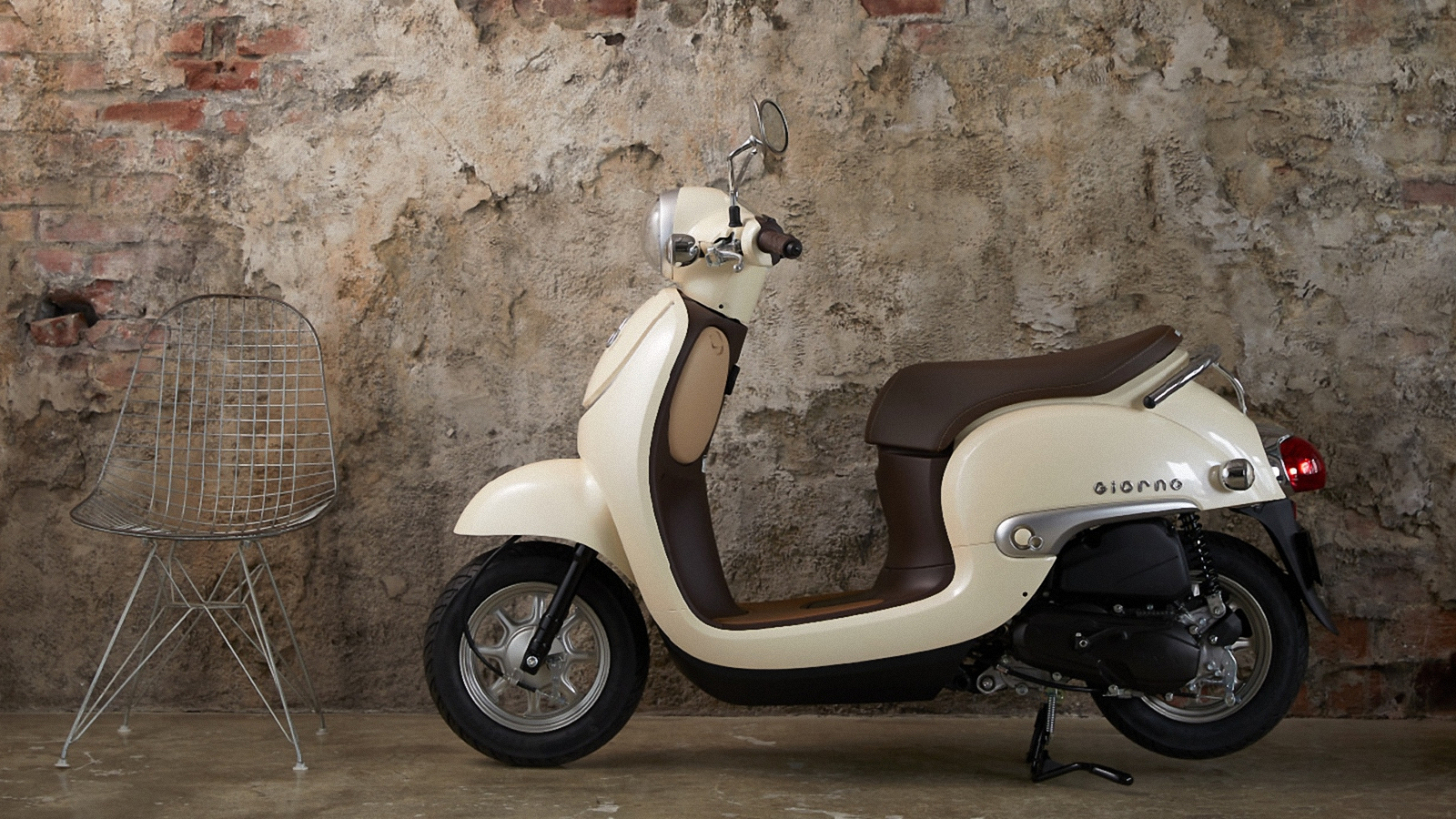
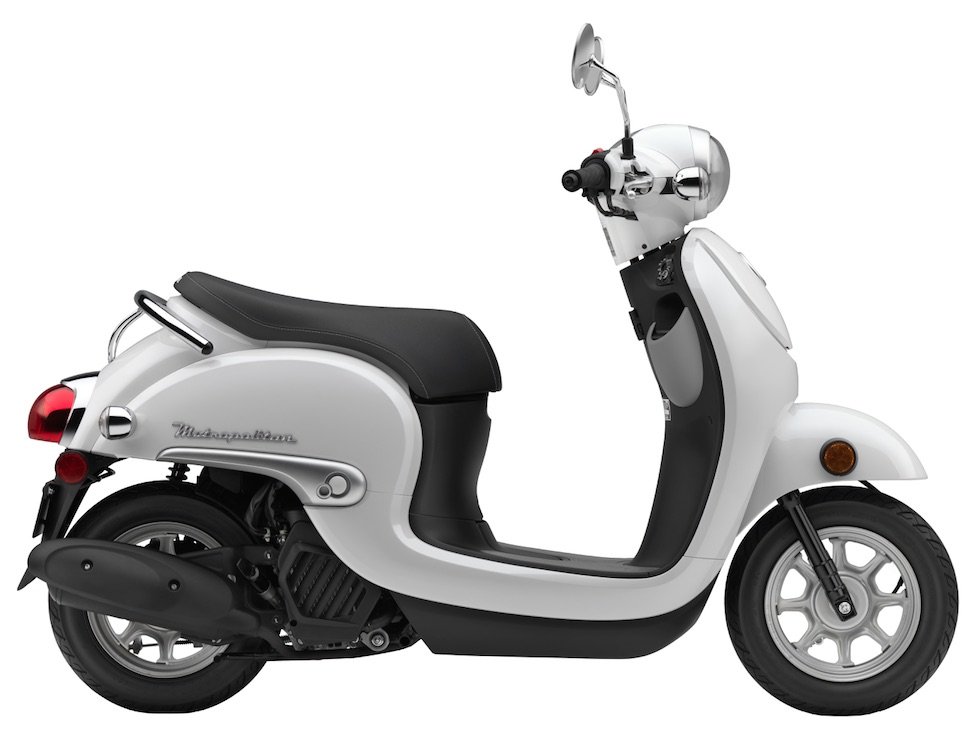
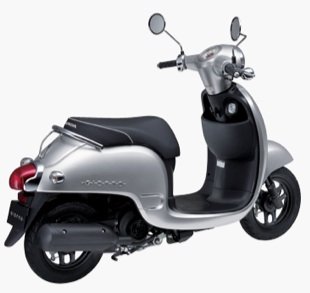 Design and Amenities
Design and Amenities